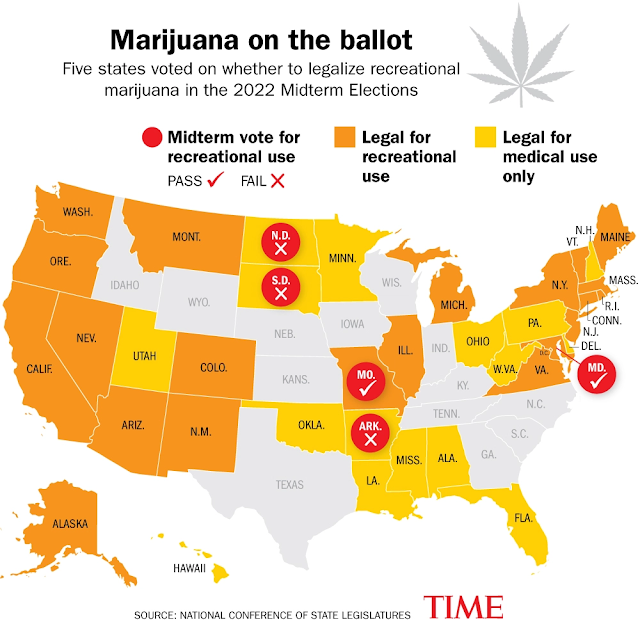Here's an exciting account, just published in JAMA Surgery, of a three way liver exchange in Pakistan, achieved in part by collaboration with economist and market designer Alex Chan (who is on the job market this year).
Launching Liver Exchange and the First 3-Way Liver Paired Donation by Saad Salman, MD, MPH1; Muhammad Arsalan, MBBS2; Faisal Saud Dar, MBBS2, JAMA Surg. Published online December 7, 2022. doi:10.1001/jamasurg.2022.5440 (pdf)
Here are the first paragraphs:
"There is a shortage of transplantable organs almost everywhere in the world. In the US, about 6000 transplant candidates die waiting each year.1 In Pakistan, 30% to 50% of patients who needed a liver transplant are unable to secure a compatible donor, and about 10 000 people die each year waiting for a liver.2 Kidney paired donations, supported by Nobel Prize–winning kidney exchange (KE) algorithms,3 have enabled living donor kidneys to become an important source of kidneys. Exchanges supported by algorithms that systematically identify the optimal set of paired donations has yet to take hold for liver transplant.
"The innovation reported here is the successful implementation of a liver exchange mechanism4 that also led to 3 liver allotransplants and 3 hepatectomies between 3 incompatible patient-donor pairs with living donor–patient ABO/size incompatibilities. These were facilitated by one of the world’s first documented 3-way liver paired donations (LPD) between patient-donor pairs.
"Since 2018 and 2019, we have explored LPD as a strategy to overcome barriers for liver failure patients in Pakistan in collaboration with economist Alex Chan, MPH.2 With LPD, the incompatibility issues with relative donors can be solved by exchanging donors. The Pakistan Kidney and Liver Institute (PKLI) adopted a liver exchange algorithm developed by Chan4 to evaluate LPD opportunities that prioritizes clinical urgency (Model for End-stage Liver Disease [MELD] scores) while maximizing transplant-enabling 2-way or 3-way swaps that ensures that hepatectomies for every donor within each swap has comparable ex ante risk (to ensure fairness). As of March 2022, 20 PKLI liver transplant candidates had actively coregistered living and related but incompatible liver donors. Evaluating these 20 incompatible patient-donor pairs with the algorithm,4 we found 7 potential transplants by two 2-way swaps and the 3-way swap reported. In contrast to ad hoc manual identification of organ exchange opportunities, the hallmark of a scalable organ exchange program is the regular deployment of algorithms to systematically identify possible exchanges. Regular deployment of LPD algorithms is novel.
"A total of 6 procedures took place on March 17, 2022. Patient 1, a 57-year-old man, received a right liver lobe from donor 2, a 28-year-old coregistered donor of patient 2 (56-year-old man), who in turn received a right liver lobe from donor 3, a 35-year-old woman who was a coregistered donor of patient 3. Patient 3, a 46-year-old man, received a right liver lobe from donor 1, a 22-year-old woman who was a coregistered donor of patient 1, completing the cycle (Figure). Five PKLI consultant surgeons and 7 senior registrars led the hepatectomies and liver allotransplants; 6 operating rooms were used simultaneously. One month postsurgery, all patients and donors are robust with no graft rejection. All the donors are doing well in the follow-up visits and have shown no psychological issues."
Here's a sentence in the acknowledgements:
"We thank Alex Chan, MPH (Stanford University, Palo Alto, California), whose initiative and expertise in economics were the key driving forces for launching liver exchange."
And here are the references cited:
Here's a Stanford story on this collaboration:
"The liver exchange idea actually came out of a term paper in a first-year market design class at Stanford," Chan said.
"As he learned more about liver transplants, Chan realized there were important biological and ethical differences from kidney transplants.
...
"Instead of just finding compatible swaps, we want to find swaps that prioitize the most urgent patients first in order to prevent the most deaths," Chan said.
*******
Here are some contemporaneous stories from March in the newspaper Dawn (now that the JAMA embargo on the story is lifted):

















